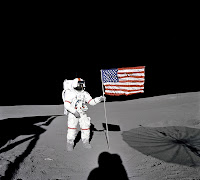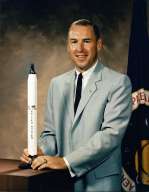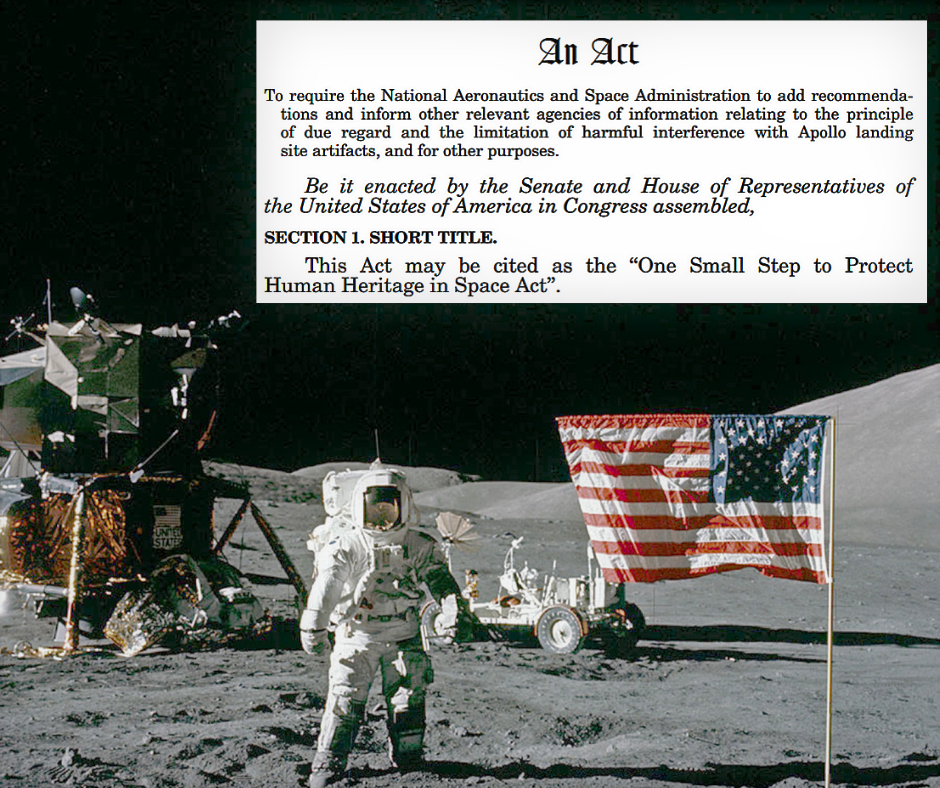 |
Apollo 14 Commander Alan Shepard left artifacts on
the lunar surface, including two golf balls
that he drove “miles and miles and miles.”
The lunar lander, Antares, appears in the left shadow.
Astronaut Ed Mitchell’s shadow is cast (center)
as he takes Shepard’s photo. Courtesy NASA. |
Materials relating to space heritage consist of natural astromaterials, man-made objects used in space-related activity, and tangible evidence of human activity such as Neil Armstrong’s first lunar boot print. They deserve to be preserved.
While some have begun this conversation already in the context of the Moon Treaty of 1979, the Outer Space Treaty of 1967, and other legal regimes, the time is ripe to more fully discuss space heritage in earnest as new groups venture beyond the earth’s atmosphere. USA Today reports that China has just announced an ambitious plan to build a space station and to send astronauts to the Moon. Meanwhile, Virgin Galactic hopes to shuttle space tourists soon. It is therefore best to get ahead of the issue of heritage protection now rather than to hurriedly catch up at a later date.
Already NASA’s Office of Inspector General (OIG) released an audit report critical of the American space agency for not keeping current track of moon rocks, stardust, meteorites, and other astromaterials in the space agency’s possession. The December 8, 2011 report makes the following conclusion:
“For over 40 years, NASA has loaned astromaterial samples to researchers and shared lunar and meteorite exhibits with educators and the public. However, the materials remain the property of the U.S. Government and may only be borrowed for approved research, educational pursuits, and public display. Additionally, while loan periods may range from days to years, these transfers are not intended to be permanent, and NASA retains the right to recall its samples and exhibits at any time. Because NASA does not have adequate controls in place, the Agency cannot be sure of the location and security of all of its loaned astromaterials and therefore is at risk of losing these unique and limited resources.”
 |
Astronaut James Lovell.
Courtesy NASA. |
It may be no surprise that NASA, perhaps motivated by the release of the OIG report, challenged the authority of an auction house to sell an Apollo program mission artifact. Days ago the Associated Press reported that “NASA is questioning whether Apollo 13 commander James Lovell has the right to sell a 70-page checklist from the flight that includes his handwritten calculations that were crucial in guiding the damaged spacecraft back to Earth. The document was sold by Heritage Auctions in November for more than $388,000….” The Associated Press added that “[a]fter the sale, NASA contacted Heritage to ask whether Lovell had title to the checklist. Greg Rohan, president of Dallas-based Heritage, said Thursday the sale has been suspended pending the outcome of the inquiry,” noting that there is precedent for astronauts to have title to mission materials.
Lawmakers and stakeholders would be prudent to discuss and develop clearer policies now that specifically govern space heritage.
©2010-2022 Cultural Heritage Lawyer Rick St. Hilaire. Content discussing cultural heritage law, art law, looted antiquities, stolen artifacts, and museum risk management that is general information only, not legal advice.


